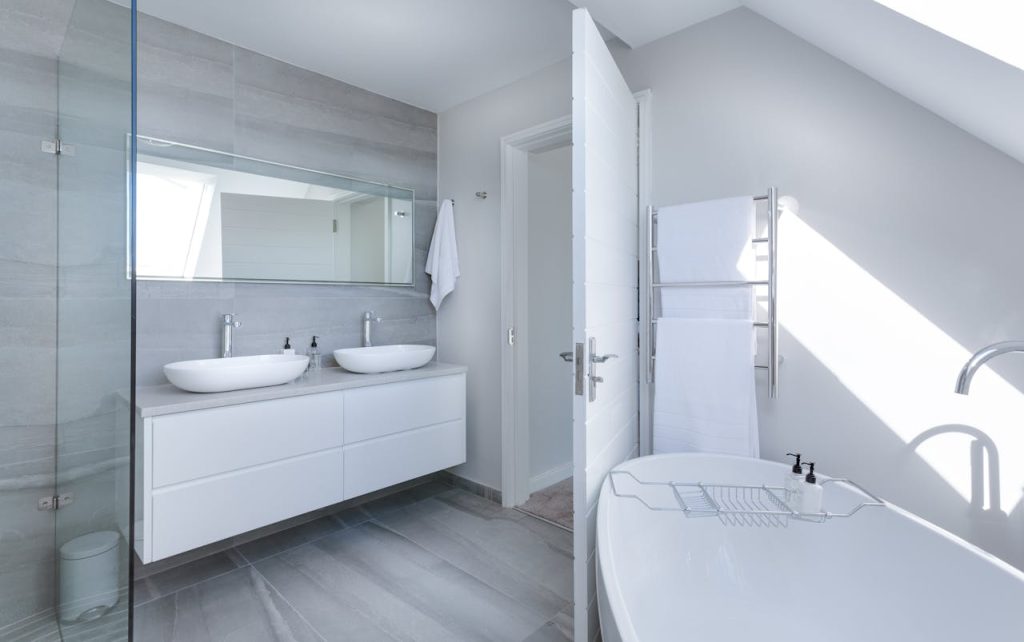
If you’re like most people, you probably don’t think twice about your bathroom habits—until your monthly water bill arrives and leaves you scratching your head. The bathroom is where the average household uses the most water, and small changes in your daily routine can make a big difference in your wallet. Whether you’re looking to save money, conserve resources, or just become more mindful of your water use, understanding the connection between your bathroom habits and your water bill is a smart move. Let’s break down the everyday choices that quietly add up and see how you can take control of your water costs. After all, every drop counts, and so does every dollar.
1. Long Showers Add Up Fast
A hot, relaxing shower can feel like a daily luxury, but those extra minutes under the spray come with a price. The average shower uses approximately 2.1 gallons of water per minute, so a 15-minute shower can consume over 31 gallons. Multiply that by the number of people in your household, and the gallons and dollars add up quickly. Cutting your shower time by just a few minutes can save hundreds of gallons each month. Try setting a timer or listening to a short playlist to keep your showers efficient.
2. Flushing Habits Matter
Toilets are one of the biggest water users in the home, accounting for nearly 30% of indoor water consumption. Older toilets can use up to 6 gallons per flush, while newer, efficient models use as little as 1.28 gallons. Even if you have a modern toilet, frequent unnecessary flushing can still drive up your water bill. Consider the “if it’s yellow, let it mellow” approach for liquid waste, or at least avoid flushing tissues and other non-essential items. If you’re not ready to replace your toilet, placing a filled water bottle in the tank can reduce the amount used per flush.
3. Leaky Faucets and Toilets Drain Your Wallet
A dripping faucet or a running toilet might seem like a minor annoyance, but these leaks can waste thousands of gallons a year. A faucet that drips once per second can waste over 3,000 gallons annually, and a running toilet can waste even more. Not only does this impact your water bill, but it’s also bad for the environment. Regularly check for leaks and fix them promptly. Many leaks are easy DIY repairs, and the savings on your monthly water bill can be significant.
4. Brushing and Shaving with the Tap Running
Leaving the tap running while brushing your teeth or shaving is a common habit, but it’s also a costly one. Running the faucet for just two minutes while brushing can waste up to 4 gallons of water. Multiply that by twice a day, and you’re looking at nearly 3,000 gallons a year per person. Instead, turn off the tap while you brush or shave, and only turn it on when you need to rinse. This simple change can have a noticeable impact on your monthly water bill.
5. Bath vs. Shower: Making the Right Choice
Many people assume that showers always use less water than baths, but that’s not always the case. A full bathtub can use up to 70 gallons of water, while a quick five-minute shower with a low-flow showerhead might use only 10 gallons. If you love baths, try filling the tub only halfway, or reserve baths for special occasions. For daily cleaning, opt for shorter showers with efficient fixtures. Being mindful of your bathing habits can help you keep your water bill in check.
6. Washing Towels and Linens Too Often
It’s easy to toss towels and bathmats into the laundry after every use, but frequent washing means more water down the drain. Most towels can be used several times before they need to be washed, especially if they’re hung up to dry between uses. Try to establish a routine where towels are washed once a week, or as needed, rather than after every use. This not only saves water but also extends the life of your linens.
7. Upgrading Fixtures for Long-Term Savings
If you’re serious about lowering your monthly water bill, consider upgrading to water-efficient fixtures. Low-flow showerheads, faucets, and toilets can dramatically reduce your water usage without sacrificing performance. Many of these upgrades are affordable and easy to install, and some local utilities even offer rebates. Over time, the savings on your water bill can more than pay for the initial investment. Look for products with the Water Sense label to ensure you’re getting the most efficient options.
Small Changes, Big Impact: Rethinking Your Bathroom Routine
Your bathroom habits have a direct impact on your monthly water bill, but the good news is that small, mindful changes can lead to big savings. By shortening your showers, fixing leaks, turning off the tap, and making smart choices about flushing and laundry, you can take control of your water use and your budget. Every step you take not only helps your wallet but also supports a more sustainable future for everyone.
What bathroom habit have you changed that made the biggest difference in your water bill? Share your tips and experiences in the comments!
Read More
Vacation Without Breaking the Bank
The post How Your Bathroom Habits Impact Your Monthly Water Bill appeared first on The Free Financial Advisor.







